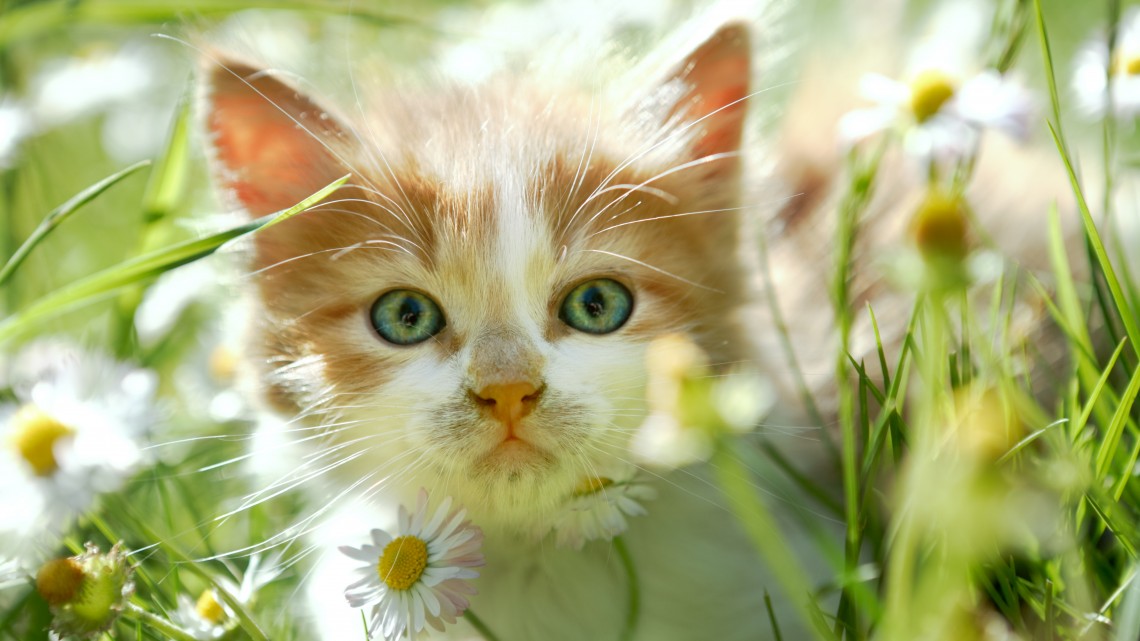Samson and Panda were outdoor cats, but when coyotes moved into the neighborhood, they had to learn to stay inside. Here’s what one family did – and how you can do the same for your own feline.
My husband and I always had outdoor cats. Our first cat, Meridian, cried at the door and begged to go out since we first adopted him. We finally gave in. I always worried about him being outside, but in the end he died of old age on his favorite chair in our living room. I told myself this was evidence that outdoor cats could live long lives and die of natural causes. So we continued to allow our remaining cat, Panda, to go out.
Then we adopted Samson from a shelter and also allowed him outside. He always came home, so we were confident he had a routine we could count on. Panda was the only one who didn’t like Samson. She tended to spend time inside when he was out and to go out when he came in. Their outdoor time, we reasoned, was helping them get much-needed space away from each other.
Then one Saturday, Samson went out and didn’t come back. We waited up for him all night. I wept until morning. The next day we put up posters everywhere. Weeks passed. Then one day I got a phone message from a woman who said, “There’s been a cat hanging around my street for a few weeks now. He looks just like the cat on your poster.”
We had to visit the woman’s street several times before we finally spotted Samson. Then he wouldn’t come to us, which the vet assured us is common with cats who get lost. We finally had to rig a live trap. Five weeks after the day he went missing, Samson stepped into the trap and it shut behind him. When we brought him home, he had some cuts and scrapes but was otherwise okay.
For the next few years, Samson and Panda continued to live both indoors and out. We never let them out at night but I still worried about them and prayed they’d never get hurt. But every time I saw one of them sleeping peacefully on the porch, I told myself we were right to let them keep going out.
Then one evening this past summer, everything changed. I was taking a walk when I ran into a couple I’d never met before. They told me coyotes were now living in the woods behind our street. They had seen them in their yard. They weren’t letting their cats outside any longer.
When I got home, I told Will what I’d learned. He went online and did some research. It had originally been his idea to have outdoor cats in the first place. After reading more about coyotes, however, he became adamant against letting them out.
It’s been almost two months since Panda and Samson have lived exclusively indoors. They are adjusting much better than we could have hoped. When they go to the door wanting to go out, it’s easy to distract them with toys. We’re playing with them much more often, which is a joy.
An unexpected benefit is that they are getting along much better. Although we assumed they needed space from each other, the opposite has proven true. I’ve now come to believe that if you let cats out, their personalities get wilder. If you keep them in, their personalities become gentler.
When they go to the door wanting to go out, it’s easy to distract them with toys.
I’m actually grateful to the coyotes. Because of them, we now always know where our cats are, and I won’t spend another night crying over a missing kitty. We know we’ll lose them one day, but if we can help it, it will happen in the safety and comfort of our own home.
Tips for success:
- Optimize your litter box situation. If possible, have more than one box, especially if you have more than one cat. Be prepared to scoop each box two to three times a day. Cats accustomed to using the great outdoors as a bathroom fi nd dirty litter particularly frustrating.
- Invest in the right cat toys. Cats that tend to hunt rodents (like Samson) usually enjoy balls and toy mice. Birders (like Panda) often prefer toys that make them jump.
- Give your cat predictability. Going outdoors was part of your kitty’s routine. Replace it with an indoor routine. Feed him at the same times every day, and schedule regular play periods.
- Create an indoor refuge. Pick a room in advance where you will put your cat whenever you have an unknown visitor such as a contractor or plumber. Put some toys, a litter box, a bowl of fresh water and a scratching post in the room.
- Be patient with yourself. Keeping your cat indoors full time is also a transition for you. You might feel exasperated when she cries at the door and be tempted to let her out again to solve the problem. But it’s important to persist. The reward of knowing your cat is safe is well worth the effort.







No Comment